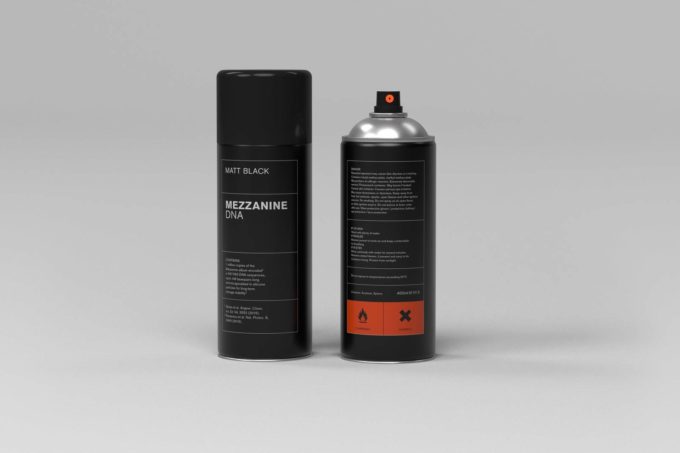Bristol-based Massive Attack has a well-deserved reputation for pushing the envelope due to its pioneering role in electronic music, herculean effort in almost single-handedly bringing trip-hop into the mainstream, experimental music videos, and biting social commentary. What’s more, Massive Attack is led by multi-instrumentalist Robert Del Naja, widely suspected as the true identity of Banksy or at least a close associate of his. They released a remastered version of their first album, Mezzanine, in commemoration of its 20th anniversary in 2018. True to form, this featured on standard electronic and CD formats in addition to a can of DNA spray paint.
This was produced in conjunction with a team of materials science researchers at ETH Zurich, Albert Einstein’s alma mater. Mezzanine was first transcribed in binary format, then translated into nucleotide sequences using combinations of adenine, guanosine, cytosine, and thymine. This bitstream constituted 901,065 separate strands of DNA. Long sequences are inherently unstable; to maintain their integrity, each was applied to a glass nanoparticle which was then encased in another layer of silica. Every spray can contains a total of 0.1 micrograms of DNA fossilized within these beads and suspended in a mixture of black paint. While the spray paint is not intended to provide a means of broadcasting or public performance, it is theoretically possible to recover the musical information by mixing it with in hydrofluoric acid, thereby eluting the silica nanoparticles and isolating the DNA.
DNA possesses significant potential as a data storage medium. Novelty aside, it offers a secure and interoperable platform capable of storing up to 100 exabytes (1 billion gigabytes) per gram. Its compactness and thermodynamic economy would obviate the need for server farms, their immense energy demands, and extensive cooling systems. DNA storage may moreover prove cost-effective over the long term. Much of the costs of Mezzanine’s DNA transfer lay in its initial transcription; this amounted to roughly $500,000 for the 15 megabytes of the album. However, subsequent copies can be produced at essentially no cost using polymerase chain replication (PCR) – a common molecular biology technique for “Xeroxing” segments of nucleic acids.
The intellectual property implications are profound. How would a DNA storage format affect ownership and security in light of traditional legal paradigms? For one, it is unclear whether the DNA storage format would represent a derivative work or a reproduction; in either case, it would appear to be covered by Massive Attack’s original copyright. What is novel, however, is the issue of public display. Is a street artist who creates a mural using Mezzanine spray paint liable for copyright infringement? In theory, a would-be “bio-digital pirate” may recover elements of the album from freshly laid paint and divert them to their own use. Moreover, fixation of music into biochemical form may blur the boundaries between copyrightable and patentable subject matter. Recent Supreme Court jurisprudence, including Diamond v. Chakrabarty (relating to human-designed bacteria) and Association for Molecular Pathology v. Myriad Genetics, Inc (human-made DNA segments) illustrated that synthetically produced, non-naturally occurring nucleic acids (as opposed to in vitro creation of naturally occurring human or animal sequences) rise to the level of “manufactures” per §101. This adds a further wrinkle to the intellectual property issues Mezzanine raises. Might an artist or producer seek a broader swath of protection by holding both a copyright on their recorded and performed works as well as a patent on its DNA-encoded variant? If so, how far would their aegis extend? If the transcribed audio-visual products – as opposed to the mere sequence – of nucleic acids are subject to robust patent protections, then forms of art may receive a double layer of safeguards. This can in turn impose sharp limits on the availability of art in public. These and other questions are as of yet unanswered by the courts, but only be expected to continue to shape intellectual property developments in coming years.
